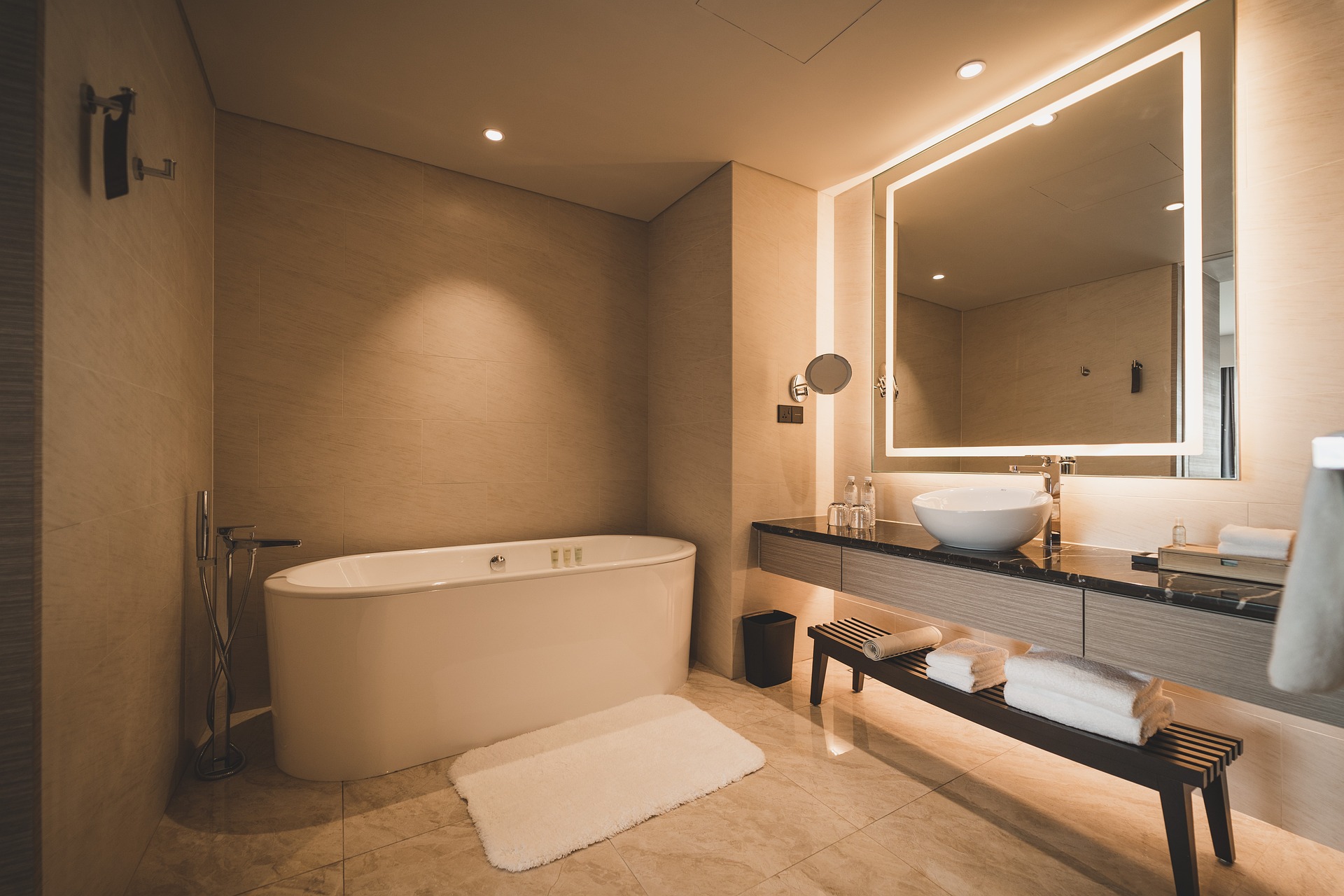Modern lighting techniques to enhance mirror and vanity zones
Modern lighting around mirrors and vanities improves task performance and visual comfort while complementing a room’s layout. Thoughtful placement, layered sources, and fixture selection tackle common bathroom challenges such as glare, shadowing, and moisture exposure. Integrating lighting with ventilation, waterproofing, and organized storage supports safer, longer-lasting vanity areas during renovation or upgrades.

Modern lighting around mirrors and vanities improves task performance and visual comfort while complementing a room’s layout. Thoughtful placement, layered sources, and fixture selection tackle common challenges such as glare, shadowing, and moisture exposure. Integrating lighting with ventilation, waterproofing, and organized storage supports safer, longer-lasting vanity areas during renovation or upgrades.
How should lighting be positioned for mirrors?
Correct positioning reduces shadows and helps with grooming and makeup tasks. Place vertical light sources at about eye level on either side of the mirror, or a linear fixture above the mirror with a diffuser to soften light. Aim for color temperatures around 2700–3500K for a natural skin-tone rendering and CRI above 90 for accurate color. Consider dimmable controls to shift from bright task light to softer ambient lighting. During renovation, coordinate lighting runs with plumbing and drainage locations so that electrical routes don’t conflict with wet areas.
What fixtures suit vanity zones?
Choose fixtures rated for damp or wet locations depending on the mirror’s proximity to shower or tub areas. Sconces, integrated LED mirror lights, and recessed ceiling cans with trim are common choices; select fixtures with IP ratings appropriate to local ventilation and waterproofing conditions. Integrated LEDs offer slim profiles and consistent output, while replaceable-bulb fixtures simplify maintenance. Ensure fixture mounting avoids interference with tiles and that wiring routes respect waterproofing membranes. Consider fixture placement to preserve storage access and avoid creating glare on glossy tile surfaces.
How does ventilation affect lighting longevity?
Good ventilation reduces humidity that can degrade fixtures, promote mold growth, and damage mirror backing. Position exhaust fans to move moist air away from vanity zones, and use fans with adequate extraction rates for the room size. Combine ventilation with fixtures that have corrosion-resistant finishes and sealed housings where necessary. During renovation, verify that fan ducting and electrical runs don’t conflict with mirrored cabinetry or plumbing lines. Proper airflow also helps maintain heating balance around the vanity, reducing condensation on mirrors that can diminish lighting effectiveness.
What waterproofing and mold considerations matter?
Waterproofing around vanities protects underlying cabinetry, mirror adhesives, and light fixtures from moisture intrusion. Use appropriate membranes behind tiles and around sink penetrations, and select mirror adhesives and fixture gaskets rated for humid environments. Regularly inspect seals and grout lines to prevent water from reaching electrical components. Adequate ventilation and heating can limit mold risk, but design choices—such as avoiding recessed fixtures in poorly ventilated, unsealed zones—further reduce vulnerabilities. Drainage layout should keep splashes and leaks away from lighting junctions.
How can storage and accessibility integrate with lighting?
Plan storage so that lighting complements access without casting shadows into cabinets or drawers. Recessed strip lighting or motion-activated LEDs inside vanity cabinets and drawers improve visibility of contents and support accessibility for people with limited mobility. Position switches and dimmers within reach and consider low-glare task lights that don’t obscure mirrors when cabinets are open. During renovation, coordinate storage locations with plumbing runs and ensure tiles and finishes around storage openings are durable and waterproofed to prevent moisture-related damage.
What about plumbing, tiles, heating, and drainage with lighting?
Coordinate lighting layout with plumbing and drainage to prevent electrical conflicts and to maintain serviceability. Tile choices influence reflected light; matte tiles reduce distracting glare while glossy surfaces can exaggerate light spots. Keep heating elements such as towel warmers and underfloor systems separate from lighting junctions and use thermostatic controls to avoid localized overheating near fixtures. Where floor drainage is present, ensure low-mounted fixtures have appropriate ingress protection. During renovation, document the positions of all utilities so future lighting upgrades won’t require invasive tile or plumbing work.
Conclusion Well-planned mirror and vanity lighting balances task clarity with comfort, and it performs best when integrated with broader renovation elements like ventilation, waterproofing, plumbing, and storage. Selecting appropriate fixtures, protecting electrical components from moisture, and coordinating with tiles and heating choices all extend the life and usefulness of vanity zones. Thoughtful design choices reduce maintenance, limit mold risk, and support accessibility without compromising the visual quality of the space.





